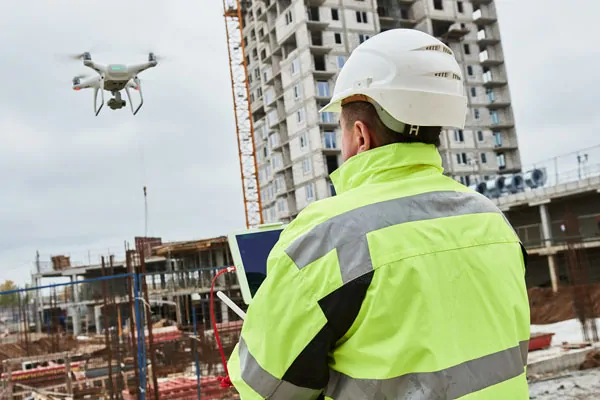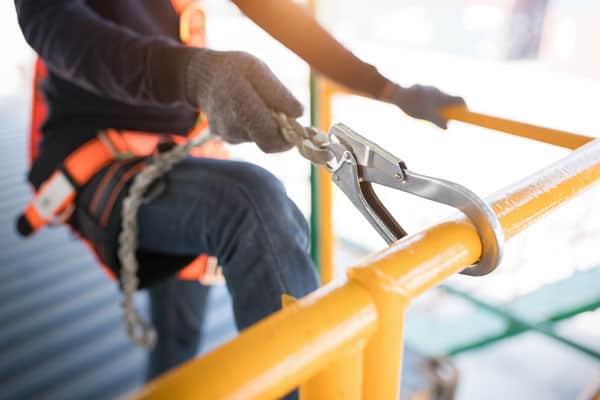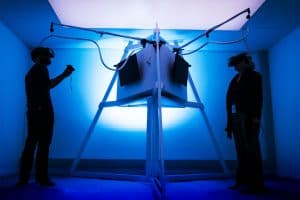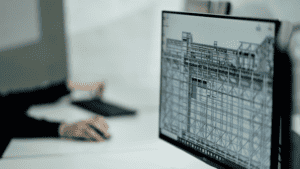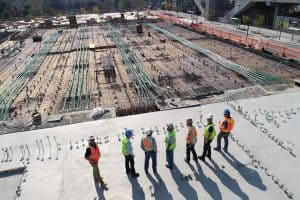Benefits of drones in construction
Construction projects are complicated, time-consuming and resource-intensive.
According to a report from McKinsey & Co. keeping a project on schedule and costs down are the two most highly valued performance metrics for construction companies. However, the construction sector has struggled to meet these requirements. 53% of completed construction projects are behind schedule. 66% of completed construction projects are over budget.
Drones in the construction industry can reverse these trends. They realize the important role of unmanned aerial vehicles (UAVs) in improving the industry. UAVs, or drones, can help improve company performance and complete commercial projects faster. Below are 3 ways companies are deploying drones in construction today.
Use drones for surveying construction sites
One of the best use cases for drones in construction is project surveying. Mapping drones are perfect for surveying roadways, congested city landscapes, or flooded areas.
Using LiDAR technology, mapping drones can fly over an area and scan for topographical data. LiDAR stands for Light Detection And Ranging. It uses light beams to detect, range, and map its surroundings. Mapping drones boast quick data collection, excellent positional accuracy, and a safe drone operator experience. Additionally, mapping drones can fly closer to the ground and offer improved data resolution.
A traditional ground survey team may need a month to map a difficult 100-acre site. However, an app development company building custom drone solutions will require significantly less time, fewer people, and less equipment to complete. With mapping drones, you can get survey grade accuracy under an hour. Some drones even integrate flight planning software to make flight planning easy and efficient.
The accurate data collected from drone surveying can be uploaded onsite to the cloud ready to be processed. GIS mapping helps create a digital map from data. Using drone mapping software allows construction companies to create 2D orthomosaics, 3D models, digital elevation models (DEMs), and 3D point clouds.
Drone Mapping Applications:
- 3D Digital Mapping
- Autonomous GPS Waypoints
- 4K High-Resolution Inspections
- Site Planning
- Thermal Inspections
Drone generated survey data is accurate, comprehensive and fast giving construction companies detailed 3D models to gain valuable insights.
SEE ALSO: Smart Construction: Build Smarter with Artificial Intelligence
Use drones for construction management
Drones and GeoAI make it easier to track material, equipment, and people. A project manager can use drone data to quickly assess team productivity and resource distribution. With drone data, project managers can track real-time progress with the estimates, identify project risks, and make informed decisions for keeping projects on track.
Track and Report Weekly Progress
By generating weekly drone maps, project managers can quickly and accurately monitor project progress. With automated flight planning, drones can survey the same area accurately and create a comprehensive visual record of the project. Progress reports can also be shared with internal and external stakeholders.
Monitor Multiple Job Sites
Drone generated data can be uploaded to the cloud making it available anywhere. Contractors who need to manage several projects simultaneously can receive a complete overview of each site on their smart device. Drones help reduce travel time between job sites.
Collaborate with Team Members
Drones simplify communication and information sharing. All aerial imagery captured by drones is uploaded to the cloud. Cloud-based software can easily be used to share annotated maps with team members. This information can be accessed via desktop or mobile devices. By collecting and sharing real-time data, project managers can potentially shave days (or weeks) off their project timeline.
Use drones to build stronger client relationships
The benefits of drone technology aren’t limited to the project itself. Data captured by the drone can benefit other important aspects of the construction business.
Share Progress with Stakeholders and Customers
Drones offer an alternative to in-person tours. Drones can take photos of the construction sites to provide real-time updates to the stakeholders and customers. With its capability to reporting site progress remotely, drones bring to job sites to the office. With cloud solutions, data collected from the drone can be stored for tracking progress over time and making work collaboration easier.
Boost Sales with a Quality Portfolio
Construction companies are always looking for that next project. Onboarding new clients mean companies need to showcase their past work. In the past, a company would hire a business that specializes in aerial photography. Now, you can take high-quality photographs with a drone. Drones can take before, in-progress, and after shots of the project. Include this photography in marketing materials like your website and client proposals.
Use drones to protect your workforce
Prevent Accidents
According to the Bureau of Labor Statistics, there are roughly 150,000 construction site accidents each year. Many of these occur because workers are unnecessarily put in danger. Drones can fly hundreds of feet in the air to inspect hard to reach places. Using drones in construction safety eliminates the need for workers to climb high altitudes and risk getting hurt.
Identify Hazardous Conditions
Thermographic imaging can be used to detect water infiltration on roofs and facades. Water damage can be difficult to see in a traditional inspection, but drones are able to identify leaks, mold, and rot. Understanding this data allows construction companies to create accurate plans for repair and replacement without putting workers in danger.
Bottom Line
More than half of construction projects miss their deadlines and their financial targets. Drone technology in construction can help meet these targets without incurring massive expenses. Whether for assessment, data collection, or transportation, drones will help you get the job done. A few construction businesses already recognize the true value of drones. They are actively seeking ways to utilize them to benefit their business and customer base. As the adoption of drones in construction increases, we will see further advancements benefit the construction sector and beyond. This is true not only of drones but all digital initiatives as more companies invest in mobile app development, web app development, cloud app development, augmented reality, virtual reality, and artificial intelligence.
